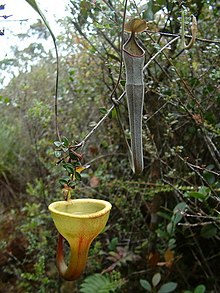
Back تماكن Arabic Simpatria Catalan Sympatrie Czech Sympatrie German Simpatrio Esperanto Simpatría Spanish همجا Persian Sympatrie French תפוצה חופפת HE Senpatri HT

In biology, two related species or populations are considered sympatric when they exist in the same geographic area and thus frequently encounter one another.[1] An initially interbreeding population that splits into two or more distinct species sharing a common range exemplifies sympatric speciation. Such speciation may be a product of reproductive isolation – which prevents hybrid offspring from being viable or able to reproduce, thereby reducing gene flow – that results in genetic divergence.[2] Sympatric speciation may, but need not, arise through secondary contact, which refers to speciation or divergence in allopatry followed by range expansions leading to an area of sympatry. Sympatric species or taxa in secondary contact may or may not interbreed.
- ^ Futuyma 2009, pp. 448, G-9.
- ^ Futuyma 2009, p. 241.